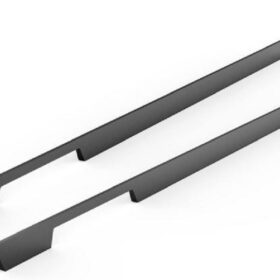The Environmental Impact of Modern Closet Door Pulls
In the realm of home decor, closet door pulls often go unnoticed, yet they play a significant role in shaping a room’s aesthetic. However, the environmental implications of these seemingly innocuous fixtures should not be overlooked. Modern closet door pulls, crafted from various materials and processes, can have a profound impact on the planet.
Material Extraction and Processing
The extraction and processing of raw materials for closet door pulls can deplete natural resources and contribute to environmental degradation. Common materials include metal, plastic, and wood, each with its own unique environmental footprint. Metal extraction involves mining operations that can disrupt landscapes and release harmful pollutants into the air and water. Plastic, derived from fossil fuels, contributes to greenhouse gas emissions during its production and disposal. Wood, while renewable, requires significant land and resources for cultivation and processing.
Manufacturing and Energy Consumption
The manufacturing process of closet door pulls also has environmental implications. Foundries and factories that produce metal pulls consume substantial amounts of energy, releasing air pollutants and greenhouse gases. Plastic pulls are often mass-produced in energy-intensive processes that involve injection molding and extrusion. Woodworking facilities, while potentially more environmentally friendly, still consume energy and generate waste during shaping, finishing, and packaging.
Durability and Waste
The durability of closet door pulls affects their environmental impact. Cheaply made pulls may break or become damaged, resulting in premature disposal. This contributes to waste accumulation in landfills and incinerators. On the other hand, durable pulls made from high-quality materials can withstand wear and tear, reducing the need for frequent replacement and lowering the overall environmental footprint.
Energy Efficiency and Indoor Air Quality
Certain closet door pulls can contribute to energy efficiency in homes. Pulls with integrated LED lighting or reflective surfaces can illuminate closets without the need for additional lighting fixtures, reducing electricity consumption. Additionally, some pulls are made from materials that emit low or no volatile organic compounds (VOCs), which can improve indoor air quality and reduce health risks for occupants.
Green Alternatives and Sustainable Practices
To mitigate the environmental impact of closet door pulls, manufacturers are exploring sustainable practices and green alternatives. Eco-friendly materials such as bamboo, cork, and recycled metals are gaining popularity. Energy-efficient pulls with LED lighting and low-VOC materials are becoming more common. Additionally, companies are implementing sustainable manufacturing processes that reduce energy consumption and waste generation.
Modern closet door pulls, while seemingly small, have a significant environmental impact that extends from material extraction to manufacturing, disposal, and energy efficiency. By considering the environmental implications when selecting and using closet door pulls, homeowners can make more sustainable choices that reduce their environmental footprint while enhancing the functionality and aesthetics of their homes.
-
2026-01-06Cabinet Pull Manufacturers: The Art of Precision in Every Detail with KRC®
-
2026-01-06Defining Excellence: What to Look for in Kitchen Cabinet Hardware Manufacturers with KRC®
-
2026-01-06Aluminium Kitchen Cabinet Handles: The Definitive Choice for Modern Culinary Spaces
-
2026-01-06Navigating the Market: A Guide to Choosing Reliable Cabinet Handles Wholesale Suppliers with KRC®
-
2024-11-29Top Trends in Modern Kitchen Cabinet Pulls for 2024
-
2024-11-28The Ultimate Guide to Modern Kitchen Cabinet Pulls- Materials, Styles, and Tips
-
2024-11-27Elevate Your Kitchen Design with These Must-Have Modern Cabinet Pulls
-
2024-11-26Sleek and Stylish- The Best Modern Kitchen Cabinet Pulls for a Contemporary Look










